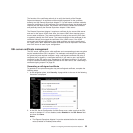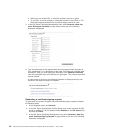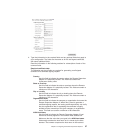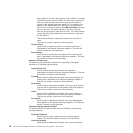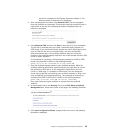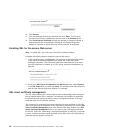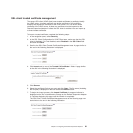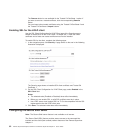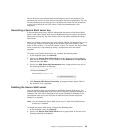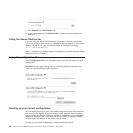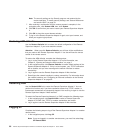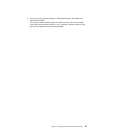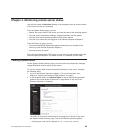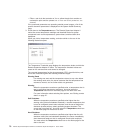
Secure Shell users are authenticated by exchanging user ID and password. The
password and user ID are sent after the encryption channel is established. The user
ID and password pair can be one of the 12 locally stored user IDs and passwords,
or they can be stored on an LDAP server. Public key authentication is not
supported.
Generating a Secure Shell server key
A Secure Shell server key is used to authenticate the identity of the Secure Shell
server to the client. Secure shell must be disabled before you create a new Secure
Shell server private key. You must create a server key before enabling the Secure
Shell server.
When you request a new server key, both a Rivest, Shamir, and Adelman key and a
DSA key are created to allow access to the Remote Supervisor Adapter II from
either an SSH version 1.5 or an SSH version 2 client. For security, the Secure Shell
server private key is not backed up during a configuration save and restore
operation.
To create a new Secure Shell server key, complete the following steps:
1. In the navigation pane, click Security.
2. Scroll to the Secure Shell (SSH) Server area and make sure that the Secure
Shell server is disabled. If it is not disabled, select Disabled in the SSH Server
field and then click Save.
3. Scroll to the SSH Server Key Management area. A page similar to the one in
the following illustration is displayed.
4. Click Generate SSH Server Private Key. A progress window opens. Wait for
the operation to be completed.
Enabling the Secure Shell server
From the Security page you can enable or disable the Secure Shell server. The
selection that you make takes effect only after the Remote Supervisor Adapter II is
restarted. The value that is displayed on the screen (Enabled or Disabled) is the
last selected value and is the value that is used when the Remote Supervisor
Adapter II is restarted.
Note: You can enable the Secure Shell server only if a valid Secure Shell server
private key is installed.
To enable the Secure Shell server, complete the following steps:
1. In the navigation pane, click Security.
2. Scroll to the Secure Shell (SSH) Server area. A page similar to the one in the
following illustration is displayed.
Chapter 3. Configuring the Remote Supervisor Adapter II 63



